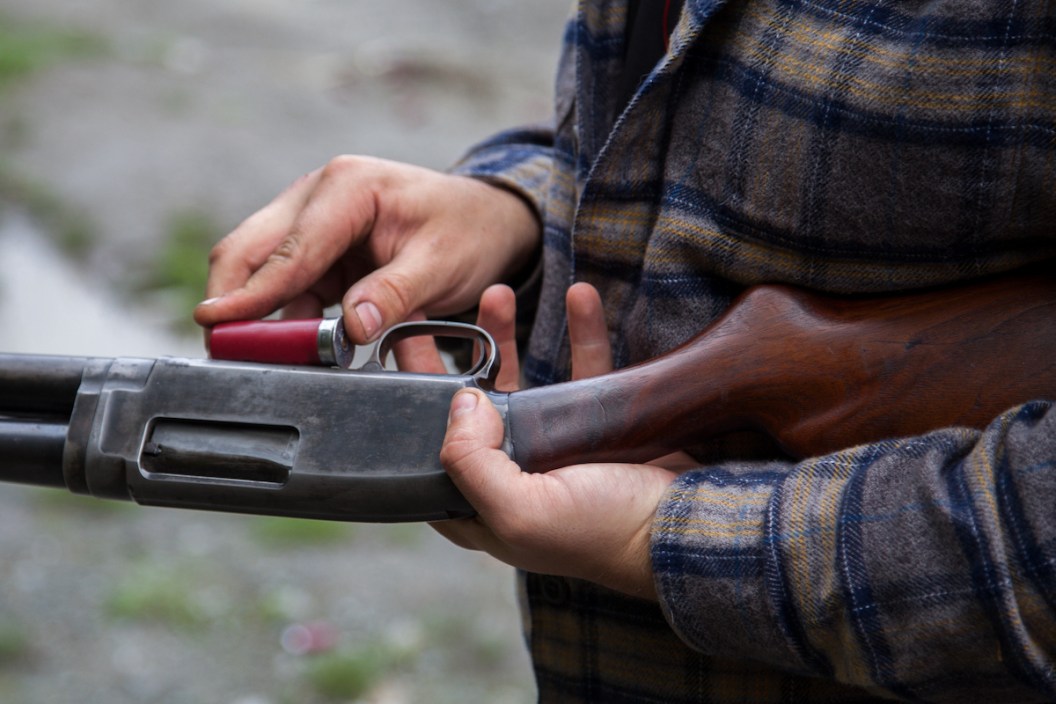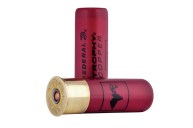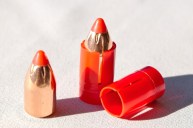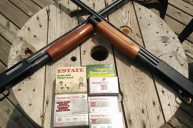Shotgun shells hold a variety of projectile types. If you can fit it in a 12-gauge hull, someone has tried to fire it out of a smoothbore. A 12-gauge shotgun can reliably fire birdshot, buckshot, and large single projectiles known as slugs. It's an odd semantic quirk, but while the projectile fired by a rifle is a bullet, a single solid shot fired from a shotgun is always a slug, whether coming out of a rifled shotgun barrel or not.
Types of Slugs: Full Bore vs. Sabot Slugs
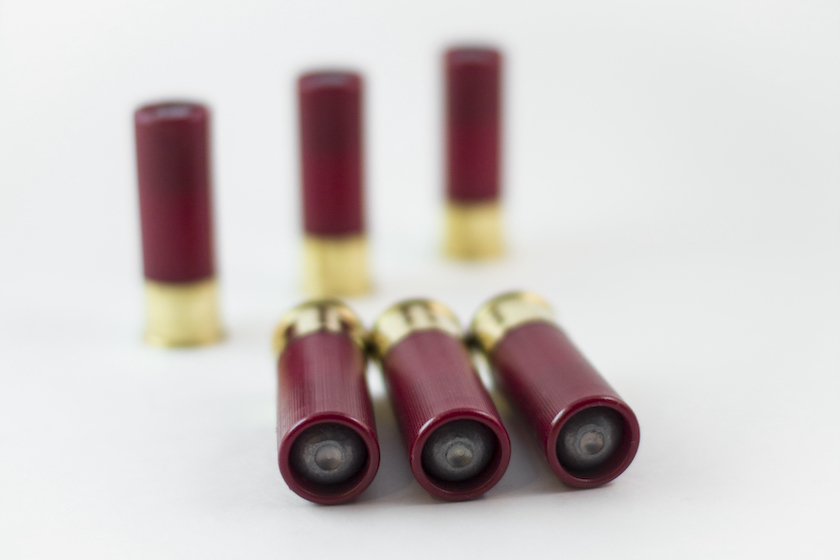
There are generally two main categories of shotgun slugs. As its name implies, a full-bore slug fulls up most of the bore diameter as it travels down a shotgun barrel, as a bullet would. Full-bore slugs utilize a "shuttlecock" method of weight distribution-most of the slug's mass sits at the front of the projectile, so the lighter rear automatically stabilizes the slug as aerodynamics take effect.
A sabot slug uses a projectile smaller than the bore encased in a plastic sabot. The sabot is what engages the rifling as both travels down the barrel. The plastic part drops away after leaving the muzzle, as a shot cup does, and allows the slug to fly on.
Let's break down this highly effective type of shotgun ammo a little more.
Foster Slugs

Everett Walker, CC BY-SA 4.0, via Wikimedia Commons
These are the oldest shotgun slugs introduced for smoothbore shotguns by Karl M. Foster back in the 1930s. They were an affordable way to turn a bird gun into a deer hunting tool during the lean times of the Great Depression. They were also relatively easy to use for reloading.
Foster-type slugs are cast out of the lead, including rifling grooves on the sides and a hollow rear. The weight of the lead slug near its nose creates a more stable flight pattern without the benefits of rifling spin. The grooves on the sides don't make the projectile spin but rather allow it to be swaged down as it passes through a shotgun's choke.
The hollow in the rear of the slug defines Fosters. This serves to enhance the shuttlecock effect, increasing the range.
Foster slugs can be fired from most chokes, rifled choke tubes, and shotgun barrels, though there is no real benefit in range or accuracy from using a Foster slug with the latter.
Rifled slugs is another name applied to Foster slugs because of those side grooves, which we now know have nothing to do with rifling. While you can fire a rifled slug from a barrel, you'll get lead in the rifling grooves, and the projectile will not shoot any better than it would from a smoothbore shotgun.
You will see arguments online about this because rifled slugs do spin a little bit more than they would if there were no grooves at all, but it's not nearly enough to increase stability or accuracy.
The cool thing about slugs and shotgun ammunition is that the same Remington 870 can be used to shoot pheasant and whitetail deer with equal efficiency. There's nothing wrong with a little more bang for your buck, eh?
Brenneke Slugs
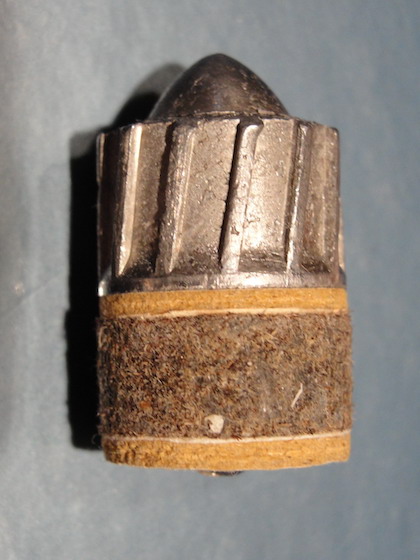
Lord Mountbatten, Public domain, via Wikimedia Commons
In the 1890s, Wilhelm Brenneke of Germany introduced the Brenneke slug. The most significant difference compared to the American Foster slug is that a Brenneke has a wad attached to the projectile that remains with it during flight to aid in stabilization.
The Brenneke is also solid, whereas the Foster is hollow. This feature keeps the Brenneke slug from deforming too much on impact, leading to deeper penetration. The downside is that its unique features limited the Brenneke slugs to short-range usage.
A Bit More About Sabot Slugs
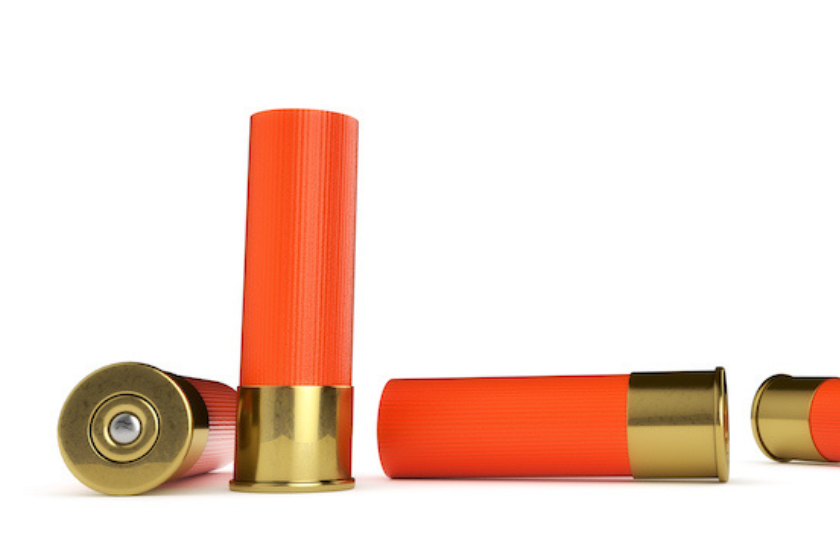
Bob_Eastman via Getty Images
Since a plastic sabot is capable of engaging rifling in a barrel, when fired from a rifled shotgun barrel, these saboted slugs have the same advantages of spin that a rifle bullet does. This includes greater accuracy, extended range, and incredible muzzle velocity.
The combination of sabot slugs and rifled shotgun barrels significantly increased the platform's capability. Today, a 12-gauge slug in a sabot is a .72 caliber rifle bullet (.61 caliber if you run a 20-gauge) when fired from a rifled slug barrel.
That's a lot of mass. They don't have tremendous range because of their weight, but inside 200 yards, they are highly effective and accurate. Many have hollow point designs perched in magnum shells, which can cause astonishing wound channels in big game.
This article was originally published on September 25, 2021.
